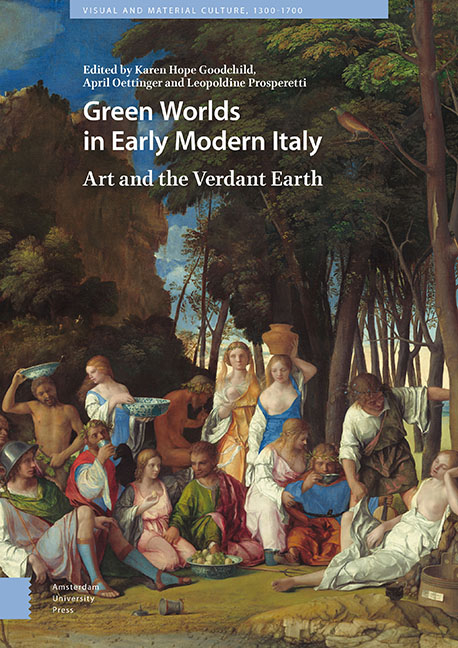Book contents
Introduction: A Fresh Vision of the Natural World in Renaissance Italy
Published online by Cambridge University Press: 21 November 2020
Summary
The verdant earth! Since 1982, National Public Radio listeners have heard this phrase each time the station invokes the John T. and Catherine D. MacArthur Foundation’s commitment ‘to build a more just, verdant and peaceful world’. Taking its position between justice and peace, verdancy is presented as desirable, even essential, for the well-being of humankind. The globe's verdancy is often cast as ‘the green mantle of the earth’, an age-old metaphor given a new life by Rachel Carson, the much admired environmentalist. Carson's Silent Spring (1962) opened the nation's eyes to the fragility of our world. The notion of a ‘green mantle’, Carson's title for her Chapter Six, is operative throughout Silent Spring as the author offers a gripping vision of the threads and filaments by which nature weaves the fabric of the earth. Aware of the power of natural imagery, she prefaced her scientific work with the elegiac A Fable for Tomorrow, a poetic rendering of a nameless town in the ‘heart of America’, where oaks, maples, and birches, as well as laurel, viburnum, and alder, delight a visitor’s eyes before a ‘grim specter’ creeps upon the scene and a layer of white dust dulls nature's verdant garb. The publication of Carson's book was an explosive event, and, ever since, to be ‘green’ is to be aware of both earth's glorious garment and its perilous state. Forty years later, in 2002, E.O. Wilson characterized the biosphere as a ‘unique, shimmering physical disequilibrium’, preserving in this image the idea of nature’s appearance as a rippling fabric that gathers gleaming lights in its restless folds. This book will show that these sentiments are not uniquely the concerns of modern ecologists and environmentalists. They form part of a rich legacy bequeathed by countless poets and artists who, from the ancient lyricists to the neo-pastoralists of today, were devoted to bodying forth the earth in all her flowering and verdant manifestations.
In echoing the theme of nature fashioning her green coat, Carson and Wilson are tied to writers of the past: classical poets, like Theocritus and Vergil, who gave us the topic of shaded repose in the countryside; and scriptural writers, like Saints Basil and Ambrose, who took it as their task to praise, in prose and poetry, the wondrous nature of the Creation.
- Type
- Chapter
- Information
- Green Worlds in Early Modern ItalyArt and the Verdant Earth, pp. 17 - 28Publisher: Amsterdam University PressPrint publication year: 2019



